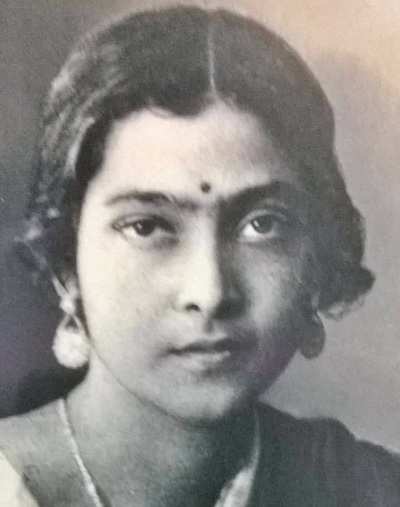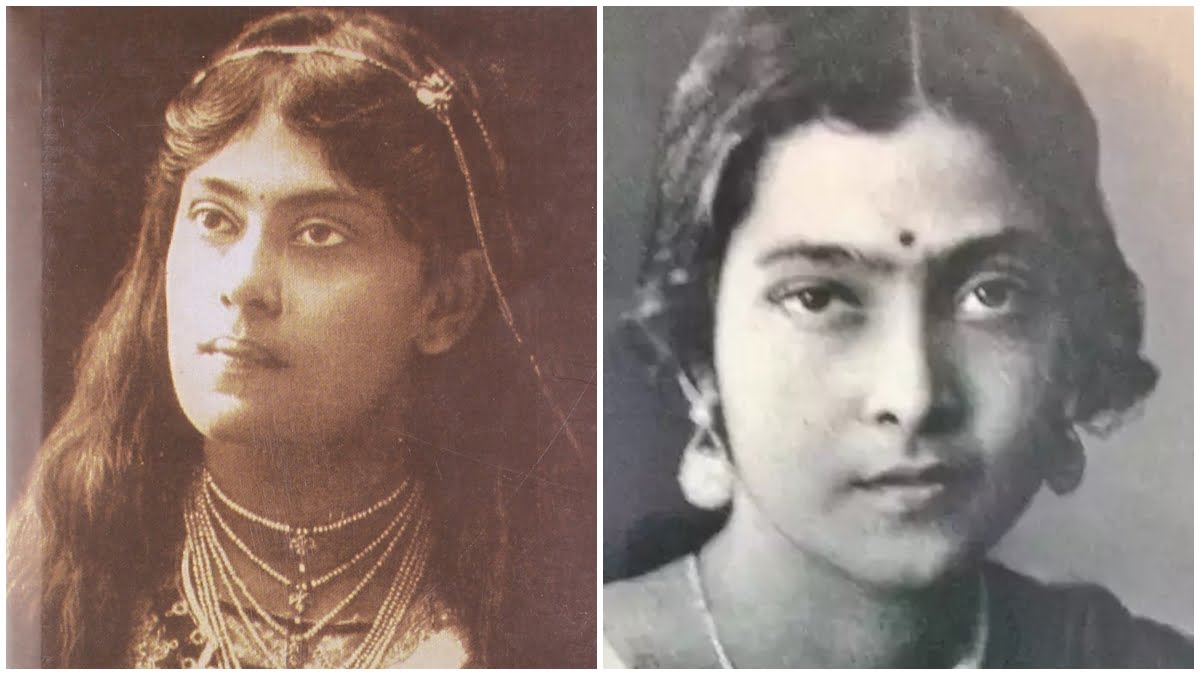Armed revolutionary activities were used as a means to achieve independence in the sub-continent since colonial rule. Most of the documentation around these revolutionary activities were however androcentric. The first phase of the Bengal revolutionary movement was marked by an absence of women’s participation even though the ideological foundation of the movement was embodied through the image of the “mother goddess”. Reverence for women became the main selling ideology of the movement, similar to that of the larger nationalist movement.
Along with this, the ideal masculinity also began to be defined in terms of male celibacy as a norm for revolutionaries to abide by. With very rigid underpinnings on masculinity and appropriate gender roles to be served during this period, women’s ‘active’ participation in the revolutionary movements were looked down upon: “The country is in a miserable state; even girls are engaging in killing.” Women were expected only to serve as support systems to their male counterparts and remain passive entities who ensured the domestic spheres were in control so as to further ensure that the public sphere could be managed by the men. In this context, the lives of two Bengali revolutionary women Sarala Devi Chaudhurani and Bina Das, become important.
Also read: Sarala Devi Chaudhurani: Founder Of India’s First Women’s Organisation | #IndianWomenInHistory
Women were expected only to serve as support systems to their male counterparts and remain passive entities who ensured the domestic spheres were in control so as to further ensure that the public sphere could be managed by the men. In this context, the lives of two Bengali revolutionary women Sarala Devi Chaudhurani and Bina Das, become important.


Sarala Devi was born in 1872, into a family of Bengali intelligentsia. Her father Janakinath Ghosal, was one of the early secretaries of the Bengal Congress and her mother, Swarnakumari Devi, was a noted author and also the sister of Rabindranath Tagore. Sarala Devi was a disciple of a certain Sivanarain Swami, who played a significant role in building the revolutionary movement in Bengal through physical culture clubs, and the teaching of yoga.
Sarala Devi went on to played an instrumental role in the formation of a new revolutionary organisation: the Suhrid Samiti in 1900. After the establishment of the Anushilan Samhiti, one of Bengal’s earliest revolutionary groups in 1902, she called for a series of gymnasiums and centres for physical training to be established which later became secret spots for revolutionary groups to gather. These gymnasiums trained individuals in lathi and dagger play for the purpose of defence training. A list of clubs and samitis associated with the Swadeshi movement also included Sarala Devi’s “Fencing Club”. After her ‘forced’ marriage initiated by her maternal grandfather, Debendranath Tagore, her involvement with these revolutionary movements reduced. She later went on to start the Bharat Stri Maha Mandal along with her husband in Allahabad, in order to spread education among women.
Bina Das was born in 1911, in Krishnanagar of the Bengal Province. She was inspired by her family of social workers, freedom fighters (her own sister, Kamala Das) and teachers to take part actively in revolutionary movements. Documents on women Bengali revolutionaries did not include much information about Bina Das. However, there is one event that has been recorded which documents Bina Das’ revolutionary participation. On the 6th of February 1932, Bina Das attempted to assassinate the then governor general of Bengal, Sir Stanley Jackson. While the attempt was unsuccessful, a professor was injured in the process. As a result, she was arrested and imprisoned for nine years. The ammunition for the event is believed to have been provided by her sister Kamala Das. The following is an extract from a newspaper article from The Glasgow Herald recording the incident:
“A girl graduate of Calcutta University fired five shots from close range at Sir Stanley Jackson, Governor of Bengal, while he was addressing the Convocation of the University on Saturday…The girl, Bina Das, was immediately arrested with the revolver still in her possession. She had been seated among the girl degree-holders during the earlier part of the address…Suddenly, she leapt forward towards the dais and levelling a revolver she had concealed in her gown, fired five shots in rapid succession…”
A statement of Bina’s later recorded reads as follows: “My objective was to die and if to die, die nobly fighting against this despotic system of government.” Bina Das cultivated her sense of political righteousness independently, by joining the Chhatri Sangha (Women Students Association) upon the completion of her secondary school education. Chhatri Sangha played the role of equipping women who were dedicated to the cause of India’s independence with skills to become revolutionary figures. It arranged study groups through which the women were taught everything “lathi and swordplay to cycling and motor driving.”
The Chhatri Sangh, a Women Students Association, was started in 1928 in Calcutta. It provided significant training and recruiting ground for future revolutionaries. The arrangements included study circles, lessons in lathi and sword play, cycling, motor driving and one of them even reportedly learnt to fly an aeroplane. Bina Das and her sister Kamala Das were also part of this Sangh. The Sangh invited girls from across the country to be a part of the group of revolutionaries. The Punya Ashram, a hostel like setup, was installed to provide accommodation for these young women.
Also read: Bina Das: The Brave Freedom Fighter Who Died In Anonymity
There was an increasingly significant participation of women in both the nationalist as well as the Bengali revolutionary movements – spaces dominated by men. Yet, these spaces were still largely influenced by individuals from upper caste and class backgrounds who closely held on to their identities, patriarchal and cultural ideals which we observe later become important ideals of nationalism and nationhood.
There was an increasingly significant participation of women in both the nationalist as well as the Bengali revolutionary movements – spaces dominated by men. Yet, these spaces were still largely influenced by individuals from upper caste and class backgrounds who closely held on to their identities, patriarchal and cultural ideals which we observe later become important ideals of nationalism and nationhood. In these revolutionary movements, we also notice a romanticisation of martyrdom and violent ambush, narratives around which fails to represent the emotional and mental trauma families carried. The politics of revolutionaries must be understood with nuance in order to understand the impacts it has on marginalised identities and who represents who and what. These lost narratives of women revolutionaries are important in understanding the pivotal role women played within these movements but also in making one aware of the larger motives of these hegemonic movements.
References
Bandyopadhyay, Sandip. “Women in the Bengal Revolutionary Movement.” Manushi 65. July–August (1991): 30-35.
The Glasgow Herald. Monday. February, 8, 1932.
Ghosh, Srabashi. “” Birds in a Cage”: Changes in Bengali Social Life as Recorded in Autobiographies by Women.” Economic and Political Weekly (1986): WS88-WS96.
Roy, Samren. ““Portrait of a Bengali Revolutionary”: A Rejoinder.” The Journal of Asian Studies 28.2 (1969): 367-373.
Jain, Simmi. Encyclopaedia of Indian Women Through the Ages: Period of freedom struggle. Vol. 3. Gyan Publishing House, 2003.
Chatterjee, Indrani. 26. The Bengali Bhadramahila. 1986.
Ghosh, Sutanuka. “Expressing the Self in Bengali Women’s Autobiographies in the Twentieth Century.” South Asia Research 30.2 (2010): 105-123.
DEY, SHUBHRA. “IDEOLOGICAL PERCEPTIONS OF WOMEN IN THE REVOLUTIONARY–” TERRORIST” MOVEMENT IN BENGAL, 1928-34: SOME INTRODUCTORY REMARKS.” Proceedings of the Indian History Congress. Vol. 53. Indian History Congress, 1992.





Bina Das was the tigress of Bengal at that time and fired the Bengal governor without fear to save the 30 crore citizen of India.